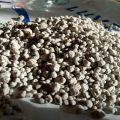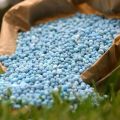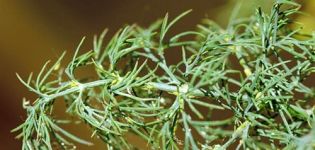Types and characteristics of mineral, organic, phosphorus, potash and nitrogen fertilizers
The use of mineral fertilizers by gardeners experienced, during the development of agricultural technology, both a peak in popularity and a decline, up to a complete rejection of inorganic compounds. However, both the excessive enthusiasm for nitrogen, phosphorus and potassium compositions, and ignoring these elements, did not lead to anything good. Too many factors depend on the correctness of their introduction into the soil: soil composition, type of fruit and vegetable crop, climate and growing conditions.
Content
The need for strict adherence to the rules for the introduction of mineral additives gave rise to the myth about the complexity of their use, but this is not so. To understand the features of the use of inorganic compounds, their types and distinctive qualities, today's article will help.
What are mineral fertilizers and why are they needed?
Organic fertilizers, in contrast to mineral fertilizers, have a wider spectrum of action, and contain all the compounds necessary for plants in full composition. Inorganic compositions are characterized by a directional effect, they must compensate for specific deficiencies in the composition of the soil or correct the development (growth, vegetation, fruiting) of the crop.
Mineral fertilizers are divided into two main groups. These are simple fertilizers (one-component) and complex (containing two or more elements). Most often, experienced agronomists are inclined to use the second type of mineral compounds, since this allows solving several tasks at the same time to replenish the deficiency of nutrients in the soil and regulate its acidity.
Types of mineral fertilizers
Mineral fertilizers, in whatever complex composition they are considered, are always based on one or more leading components:
- potassium;
- nitrogen;
- phosphorus.
It is these substances, supported by micro and macro elements that complement them in each type of supplement, are responsible for the healthy development, flowering and productivity of garden crops.
![]()
Nitrogen
Fertilizers containing nitrogen organize the construction of the plant's cellular structure, that is, they are a source of vegetable protein, without which the growth of green mass is impossible.
Mineral nitrogen compositions are divided into five groups:
- Nitrate. These include potassium, calcium and sodium nitrate. Nitrate nitrogen fertilizers suppress acidic soil conditions and are suitable for all types of plants.It is possible to apply nitrate fertilizers during all periods of crop development, but special attention is paid to a sufficient amount of nitrogen in the soil when green ovaries are formed.
- Ammonium. They completely replenish the nitrogen deficiency in the soil, but they can contribute to soil acidification, therefore they are introduced together with chalk or lime.
- Ammonium nitrate. A universal top dressing, perfectly accepted by all garden and horticultural crops. It is introduced when preparing the site during the autumn digging period or directly under the root of each seedling bush when planting.
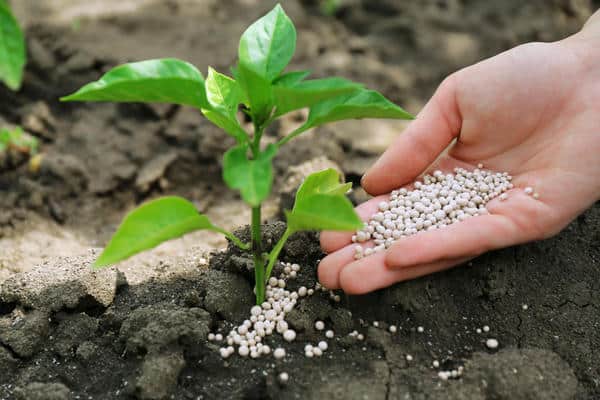
- Amide. These include urea and carbamide. They can be used for foliar fertilization, while being well perceived both by the above-ground and underground parts of the plant.
- Liquid form. This is ammonia water, various ammonia, anhydrous ammonia. They have a long-lasting effect, therefore they require less application. Alternatively, they are preferable for use in summer cottages, frequent visits to which are not possible.
Most nitrogen is required for soils of sandy and sandy loam. Plants planted in such soils without proper pre-feeding can be easily recognized by their small, dull leaves, the absence or low expression of lateral shoots, and slow growth.
Phosphoric
Phosphorus mineral supplements are responsible for oxygen exchange, that is, the process of photosynthesis of seedlings. Without the participation of this element, the green mass, and first of all the deciduous part of the crop, changes color to a darker one, and then begins to die off, stopping the growth and development of the entire plant.
Fertilizers containing large quantities of phosphorus are applied during the autumn digging. Below is a list of the most popular mineral phosphorus fertilizers used for most types of vegetables, flowers and berries:
- "Superphosphate".
- Ammophos.
- Diammophos.
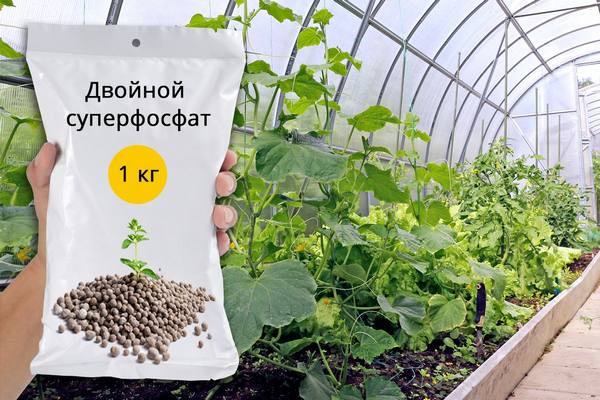
- Potassium metaphosphate.
- "Phosphate flour".
- "Nitroammofoska".
The most common among phosphorus mineral fertilizers are mixed types of dressings containing at least three components. An example of such a complex-mixed composition is "Nitroammofoska", which is perfectly absorbed by the root system of a plant during all periods of its development.
Potash
Potash mineral fertilizers are used during dry summers or when it is impossible to regularly water the seedlings. The best example of potassium fertilizers is considered to be potassium sulfate sulfate, which, in agrotechnical instructions, is used for growing potatoes and other root crops that require moisture retention in the soil, but poorly tolerate chlorine. Examples of potash formulations without chlorine: potassium nitrate, potash, potassium-magnesium sulfate.
Potassium chloride, the second type of these mineral fertilizers, is enthusiastically accepted by horticultural crops, but on one condition - if the soil of the cultivated area is light enough, and feeding is carried out not on the eve of planting, but in winter.
Complex
Complex fertilizers usually include all three basic nutrients, plus several additional trace elements that increase the versatility and functionality of the preparations. Before applying mineral fertilizers of a complex composition to the soil, it is required to assess the nature of the soil - complex fertilizing is introduced into sandy and sandy loam soils in the spring, and into heavy loam in the fall.

The simplest complex mineral fertilizers are two- and three-component sets. These are nitrogen-phosphorus, phosphorus-potassium and nitrogen-phosphorus-potassium fertilizers.
Complex-mixed
For those gardeners who do not dare to completely move away from organic fertilizers, but have already appreciated the advantage of mineral additives, there are special organomineral fertilizers containing humates on sale. This type of complex-mixed dressing, produced in granules, maintains an optimal chemical balance of the soil and preserves the active microflora in the soil.
Pure mineral compositions of complex-mixed additives combine all the same three leading components - nitrogen, potassium and phosphorus, in the formulas of different ratios of each of the elements in relation to others. Modern manufacturers, striving to preserve the purity and versatility of the composition, try to exclude chlorine components and other by-products of chemical reactions from combined dressings.
Examples of mineral fertilizers of complex combined composition:
- Ammofoska.
- "Nitrofoska".
- Diammofoska.
Despite the apparent similarity of the composition, the mixtures are represented by different formulas and have recommendations for use under the conditions of specific external and internal factors.
Microfertilizers
Microfertilizers are necessary to maintain a healthy state of all garden and horticultural crops, without exception, especially during the growing season, which determines the yield and quality of fruits.
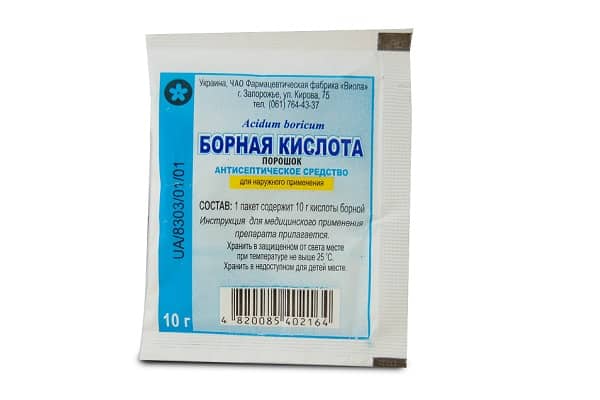
Mineral microfertilizers are used less widely than fertilizers containing organic derivatives. For the most part, they are not suitable for spraying plants and are introduced into the soil exclusively in liquid form.
Popular mineral micronutrient fertilizers:
- boric acid;
- magnesium borate;
- ferrous sulfate;
- ammonium sodium molybdate;
- potassium permanganate;
- zinc sulfate.
For each type of culture, it is desirable to select a certain composition of a multicomponent additive saturated with microelements, but relatively universal mixtures can be used. In this case, the only nuance of feeding for different plant groups will be compliance with individual dosages.
The use of mineral fertilizers: general advice
Any types and compositions of mineral fertilizers are recommended to be introduced into the soil when the seedlings recover after transplanting and actively go into the greenery, which will indicate a good rooting of the plant. In terms of time, this will be at least 20 days of the waiting period and is applied only if all the bushes in the garden are healthy and active in development.
Previously, before mineral fertilizers are applied, the soil is thoroughly moistened. If, after the process of fertilizing, a film has formed on the surface of the soil, after a few hours the soil is loosened. It is very important to observe the dosage of inorganic additives, since an excess of a solution or an overestimated concentration of a diluted substance can lead to the opposite effect.
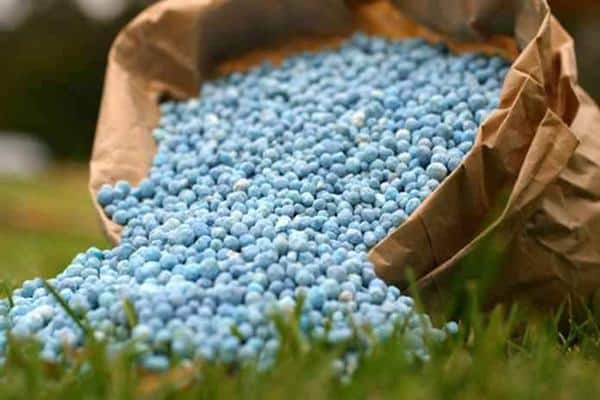
It should not be allowed that, with the root method of applying dressings, the mineral mixture falls on the green tops of the plants - the leaves, upon contact with such solutions, become covered with necrotic ulcers, and the flowers fall off.
"For" and "against" the use of fertilizers in the garden and vegetable garden
Organic fertilizers are less controversial in terms of agrotechnical use, although, upon closer examination, both their overabundance and improper use, taking into account the nature of the soil and climate, entail equally disastrous consequences for the crop. The disadvantage of mineral additives, relative to organic matter, is only that when they deviate from the application rates in the direction of increasing concentration, they tend to accumulate in the soil and change its chemical composition.
In addition, microelements, in the composition of complex mineral fertilizers, with an illiterate combination, completely block the possibility of crop development and are even capable of degrading the soil for a long time.
On the other hand, with a rational approach to mineral fertilizing, the yield of fertilized crops increases several times, the harvest of fruits occurs earlier than the standard terms, and the appearance and taste of the fruits is distinguished by the maximum correspondence to the indicators of the crop grade.




